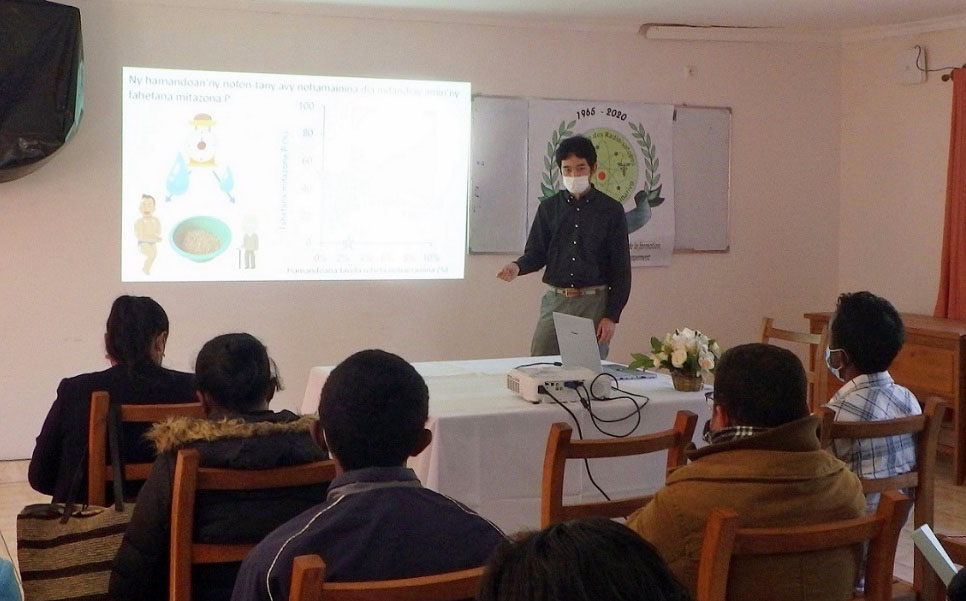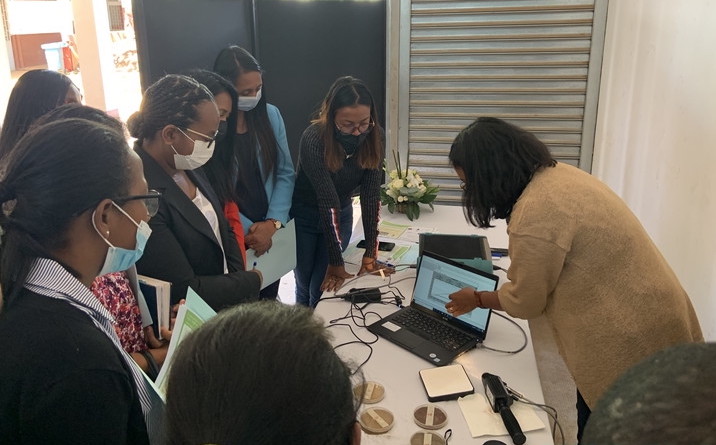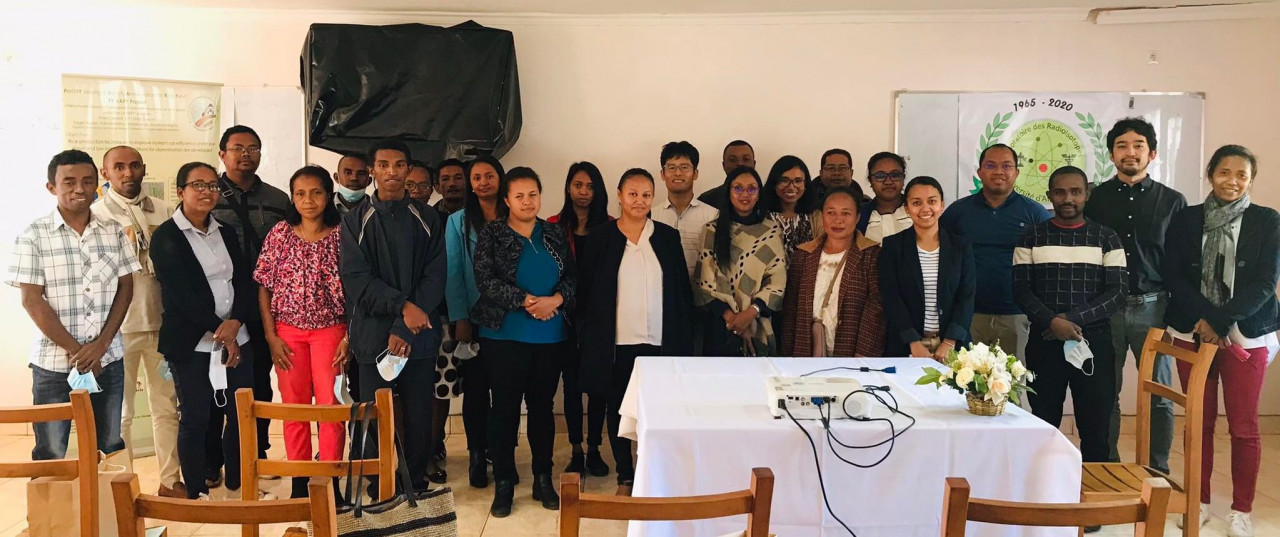JIRCAS has been implementing the SATREPS Project for Breakthrough in Nutrient Use Efficiency for Rice by Genetic Improvement and Fertility Sensing Techniques in Africa (Fy Vary Project) (Principal Investigator: Dr. TSUJIMOTO Yasuhiro) since 2017. The project is focused on Madagascar, Africa's leading rice growing country, and is aimed at improving rice productivity in an agricultural environment where soil nutrient supplying capacity and fertilizer use are scarce. In the process, simple and rapid soil evaluation technologies have been developed to realize efficient fertilizer management based on soil fertility of each farmer’s field.
On April 29, 2022, a workshop was held at the Laboratory of Radioisotope (LRI) of the University of Antananarivo, Madagascar, to hand over the soil fertility evaluation technologies developed in the project to the beneficiaries, namely, agricultural technology extension workers and technicians of agricultural research institutions.
The workshop featured presentations from LRI researcher, Dr. Hobimiarantsoa Rakotonindrina, who received PhD in the Fy Vary project, and JIRCAS researcher, Dr. NISHIGAKI Tomohiro (Crop, Livestock and Environment Division). Dr. Rakotonindrina talked about the rapid method for estimation of soil phosphorus availability using visible and near-infrared (Vis-NIR) spectroscopy (Nishigaki et al. 2020), while Dr. Nishigaki explained about the technique for estimating growth response of rice plants to phosphorus fertilization from the water content of the soil (Pick up 354). They also conducted a demonstration on how to operate the electronic measuring device and measure soil moisture content. Throughout the workshop, the participants actively asked questions and showed a strong willingness to learn the technology.
References
Breakthrough in Nutrient Use Efficiency for Rice by Genetic Improvement and Fertility Sensing Techniques in Africa
https://www.jircas.go.jp/en/satreps
Nishigaki et al. 2020. Soil phosphorus availability for rice plants can be rapidly estimated by laboratory visible and near-infrared spectroscopy (Research Highlights 2019) https://www.jircas.go.jp/en/publication/research_results/2019_b01
Pick Up 354. When Soil Changes, Fertilizer Effectiveness Also Changes ― Towards Fine-tuning of Fertilizer Management
https://www.jircas.go.jp/en/program/proc/blog/20210811



